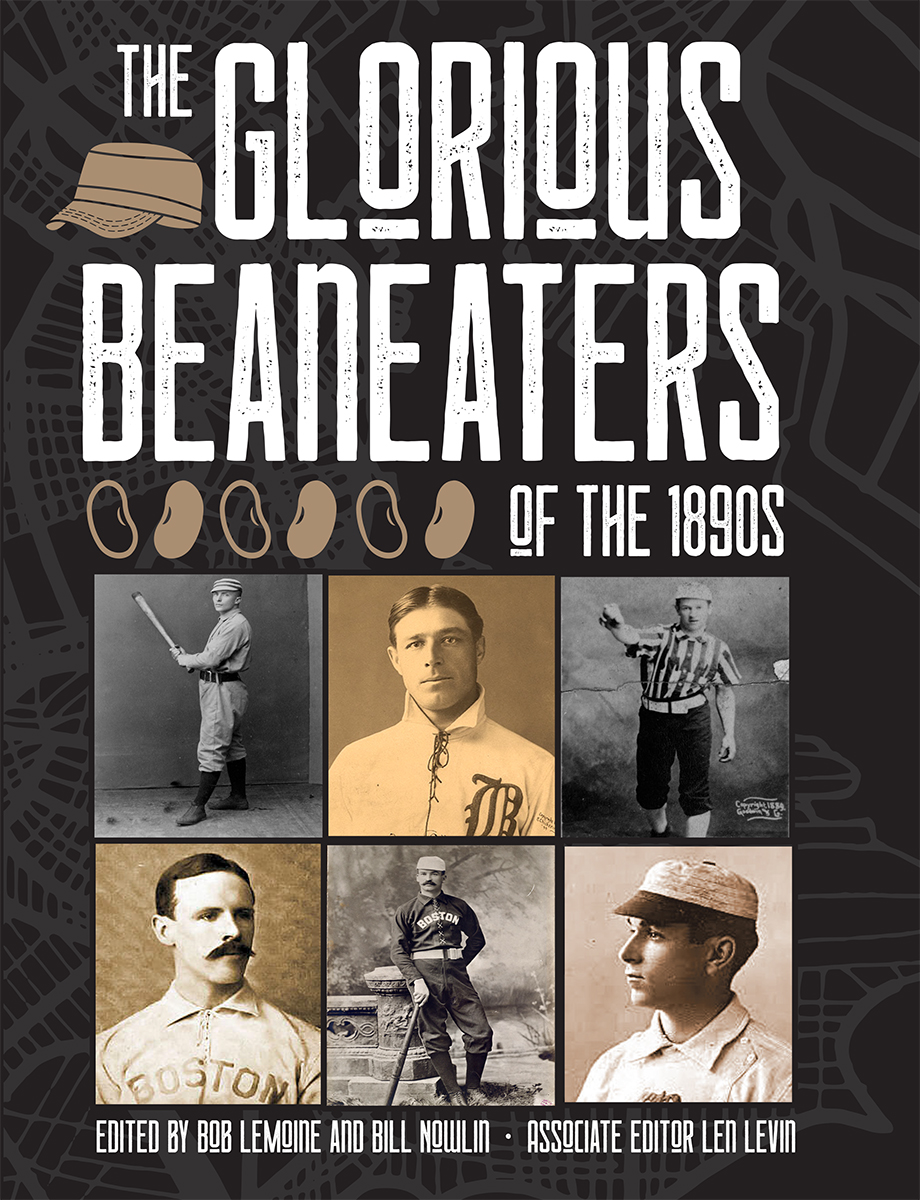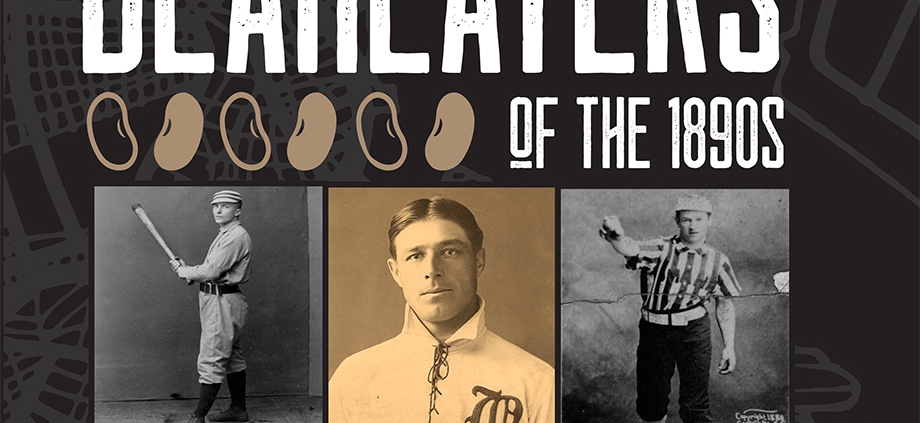Starts, Stops, and Streaks: A Modern Fan’s Guide to the 1890s Baseball Schedule
This article was written by Dixie Tourangeau
This article was published in 1890s Boston Beaneaters essays
 Baseball continued to deal with several scheduling issues in its final decade of the nineteenth century. In 1890 owners had to deal with the confusion and pure animosity provided by a third circuit, the Players’ League, to go along with the National League (1876) and the American Association (1882). The latter two had coexisted, usually cordially, for eight years and had even played against one another in “World’s Series” competition since 1884. In 1890 the three leagues were each made up of eight clubs, hoping to play 140 games (20 against the other seven cities in each circuit). Each league started within a day or two of April 19, and the PL and NL ended by October 4, the AA by October 15. Only the second-place AA Columbus Solons (79-55-6) actually played 140 total games, all six ties being squeezed into September-October.
Baseball continued to deal with several scheduling issues in its final decade of the nineteenth century. In 1890 owners had to deal with the confusion and pure animosity provided by a third circuit, the Players’ League, to go along with the National League (1876) and the American Association (1882). The latter two had coexisted, usually cordially, for eight years and had even played against one another in “World’s Series” competition since 1884. In 1890 the three leagues were each made up of eight clubs, hoping to play 140 games (20 against the other seven cities in each circuit). Each league started within a day or two of April 19, and the PL and NL ended by October 4, the AA by October 15. Only the second-place AA Columbus Solons (79-55-6) actually played 140 total games, all six ties being squeezed into September-October.
Come 1891, the PL had dissolved and most things were back to normal, 140 games starting in mid-April and ending by October. The Beaneaters were one of two clubs to play 140 games, yet there was one game they didn’t play in Philadelphia, a late July rainout that was never rescheduled. They tied New York in a classic 4-4 duel between Amos Rusie and host Charlie “Kid” Nichols that went 10 innings before dark set in, and deadlocked with Pittsburgh, 7-7, another unresolved game, so Boston took the season series 16-3-1. Boston was 15-5-1 versus the New York Giants.
When the AA broke up after 1891, that prompted a big change in the NL 1892 schedule. Four teams were absorbed (making 12 total for the NL), and the schedule was revamped so that the teams played each other 14 times for 154 total games. In hopes that some interest would not be lost late in the season by a runaway pennant race, the campaign was split: the winner of the first half to play the winner of the second half at the season’s conclusion. Boston took the first half and probably should have won the second half as well, but Cleveland came along and made the campaign interesting and provided fodder for a “postseason” series matchup. To accommodate these extra games the year started a week earlier (April 12) and finished later (October 15). Big winner Boston (102 wins total) played 17 doubleheaders, the same as last-place Baltimore (46 wins).
Complaints about awful spring weather and October boredom forced changes so the schedule was tweaked again for 1893. The dozen teams would play one another only 12 times, cutting way back to 132 games, and the split-season idea was abolished. Teams began on April 27-28 and ended before October 1. Pennant winner Boston (86 wins) played 11 doubleheaders while lowly Washington (40) endured eight. In general, this schedule remained intact for another four years until 1898, when League owners suddenly decided to generate additional revenue with more games. For both 1898 and 1899, the teams played 154 games, 14 apiece against one another. In 1898 the pennant-snatching Beaneaters (102-47) played 12 doubleheaders while the bedraggled St. Louis Browns (39-111) managed 26 twin bills, seven in its nine days of October play. All teams started by April 20 and ended by October 10. To end the decade and century, the NL went back to eight teams playing 20 games against one another (140) in 1900.
In terms of starting each 1890s campaign, the Beaneaters had a selfish lock on the April 19 date, to join in with the Patriots Day celebration (officially beginning in 1894) in the city of Boston. Seven times in 11 years that was Opening Day in the Hub, though for six years they did begin on the road. The season’s end at their “cozy confines” of the South End Grounds was on a wide range of dates from September 6 to October 14 through the 1890s. It was normal for the Beaneaters to begin on the road and come home for just Patriots Day and then be on the road again. In 1896 they played 27 road tilts bookending three at South End Grounds, Patriots Day included. For 1898 it was two on the road, host Patriots Day, and then 11 more away, followed by 1899’s three away games, Patriots Day and 13 more out of town. April 19 was that important to their gate. The years 1890-94-95-97-1900 produced a favorable schedule, which had them open the season at the South End Grounds.
Homestands and road trips fluctuated greatly during that decade. Such things were uneven at best and sheer madness at worst. In 1891 Boston had back-to-back 20-game stretches, home and away, and late in the year they were away for 19 and then home for 26. The longest homestand of the decade was 34 games in 1893 followed by 33 in 1897 and 29 in 1896. Boston traveled the longest in 1897, 30 straight games worth, and in 1895, 26. It was not until 1898 that the length of trips and comfortable home stays were scaled down to under 20. The wildest lack of team travel occurred in 1893, when only three homestands of 34, 17, and 14 games balanced off four lengthy road trips. By 1899 there were 10 shorter cuts of both, preparing twentieth-century fans for what became normal to them.
RICHARD “DIXIE” TOURANGEAU is a retired (2012) National Park Service ranger who has lived in his Boston triple-decker since 1974. It is one mile from the Beaneaters South End Grounds home, now part of his Northeastern University alma mater’s campus. He joined SABR in 1980 after being recruited by head Hall of Fame librarian Cliff Kachline. That same year he edited, then authored the Play Ball!! baseball calendar for Tide-Mark Press, of West Hartford, Connecticut. That research/writing task lasted 25 years through 2005’s issue. Just before this century began, Dixie decided it was time know “a little bit more” about 19th century base ball and took the plunge. Still immersed, he is trying to get a commemorative location sign for the iconic South End ballyard and a bronze plaque in Cooperstown for shortstop Herman Long. He roots mostly for the Rockies and Astros while petting four kitties. After 30 seasons, he gave up his Red Sox season tickets after 2017. As a volunteer guide, he gives tours on the museum ship, USS Cassin Young (DD793), at the old Charlestown Navy Yard, now Boston National Historical Park.
Sources
Retrosheet game logs for each season.


